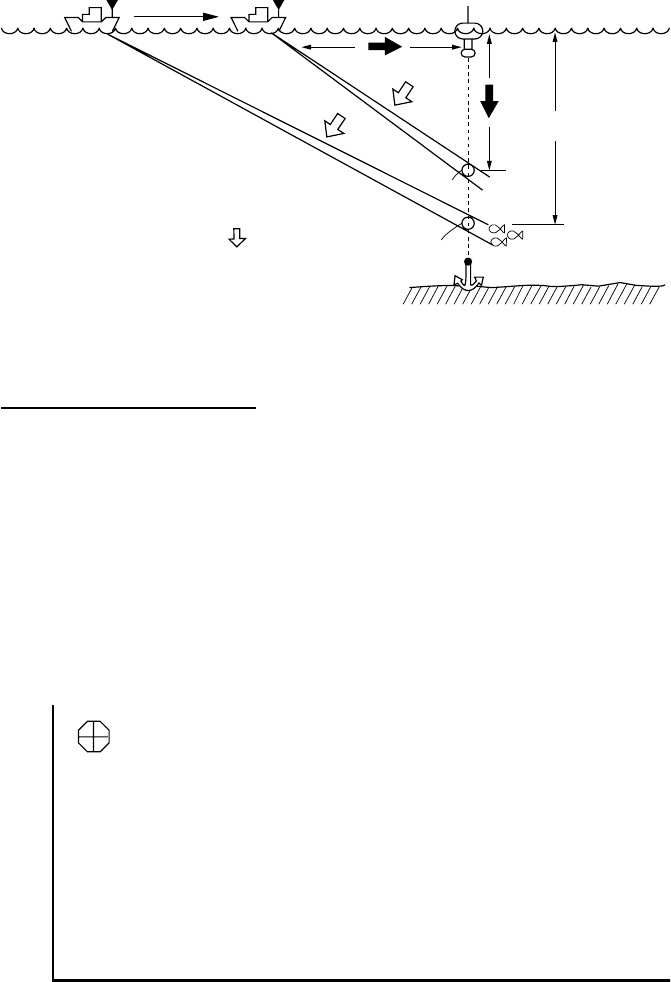
3. ADVANCED SONAR OPERATION
3-7
3.6 Event Mark, Own Ship Position Mark
3.6.1 Event mark
The event mark, which requires speed and heading data, is useful for finding the
horizontal range, depth and bearing to a location some distance from current
position.
Plotting an event mark on the display is equivalent to dropping a buoy with an
anchoring chain that extends from surface to bottom. The buoy is fixed at its
present geographical location, but the mark on the display moves to a point
where present beam plane intersects the anchor chain of the buoy as the ship
moves or the tilt angle is changed. This can be said of other marks as well such
as fish mark and trackball mark.
(35)
Stored when
EVENT key is
pressed.
A
B
You observe picture from
direction of mark.
How to use the event mark
Entering an event mark
1. Operate the trackball to place the trackball mark where you want to place an
event mark (latest event mark).
2. Press the [EVENT] key. The horizontal range, depth and bearing to the event
mark appear at the bottom left corner of the sonar display.
Event mark position is calculated from ship’s speed and heading data and it
moves on the screen with own ship’s movement. With connection of a
navigator, the latitude and longitude of the event mark are output to the
navigator when an event mark is entered, in NMEA format TLL sentence.
→234 : Horizontal range (m) from own ship mark to mark
↓121 : Depth (m) to mark
( 121) : Depth (m) of mark at moment EVENT key is pressed.
B SW/W : Bearing (degree)*
* Bearing format may be selected with
EVENT/FISH on the MARKS menu.
** Any value which exceeds 9999 is displayed
with four asterisks (****).
Event mark data, shown at bottom left corner of the display


















